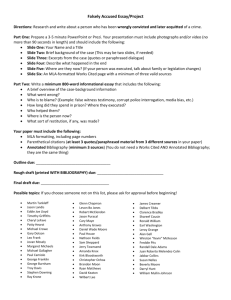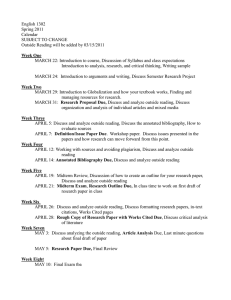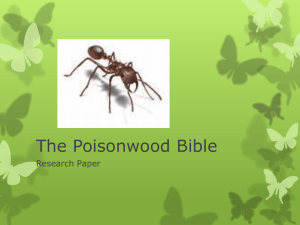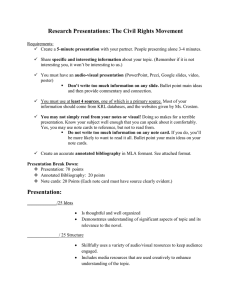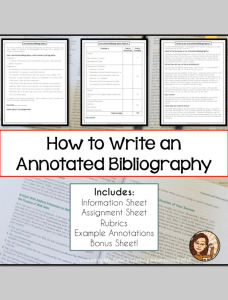How to Create an Annotated Bibliography/Resource List
advertisement
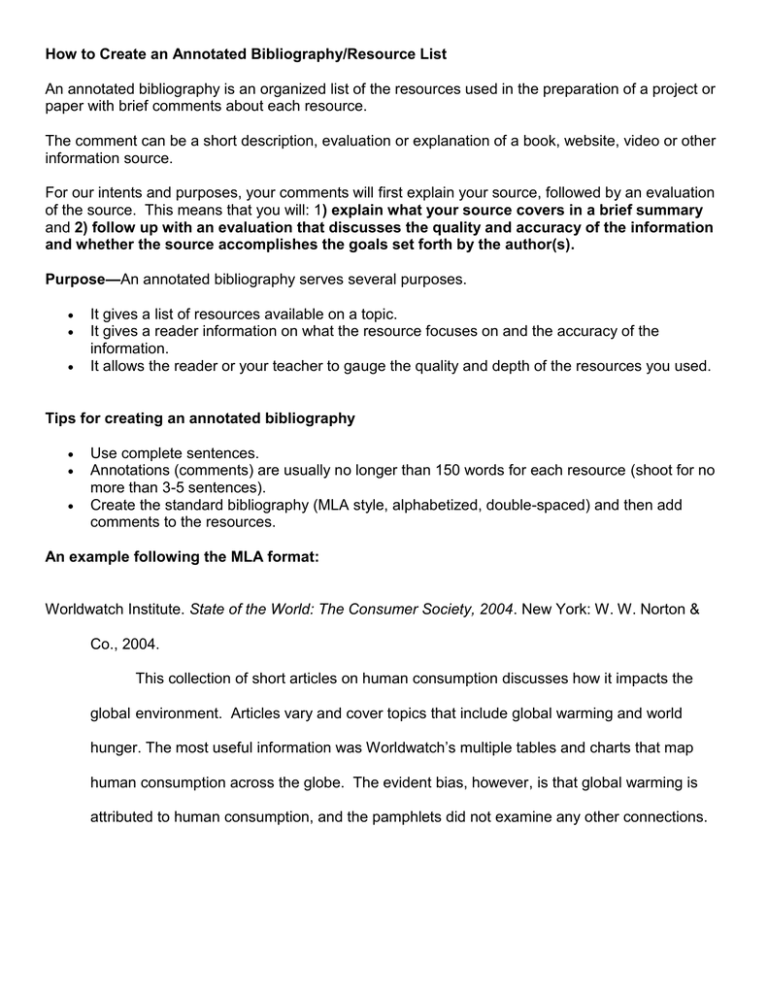
How to Create an Annotated Bibliography/Resource List An annotated bibliography is an organized list of the resources used in the preparation of a project or paper with brief comments about each resource. The comment can be a short description, evaluation or explanation of a book, website, video or other information source. For our intents and purposes, your comments will first explain your source, followed by an evaluation of the source. This means that you will: 1) explain what your source covers in a brief summary and 2) follow up with an evaluation that discusses the quality and accuracy of the information and whether the source accomplishes the goals set forth by the author(s). Purpose—An annotated bibliography serves several purposes. It gives a list of resources available on a topic. It gives a reader information on what the resource focuses on and the accuracy of the information. It allows the reader or your teacher to gauge the quality and depth of the resources you used. Tips for creating an annotated bibliography Use complete sentences. Annotations (comments) are usually no longer than 150 words for each resource (shoot for no more than 3-5 sentences). Create the standard bibliography (MLA style, alphabetized, double-spaced) and then add comments to the resources. An example following the MLA format: Worldwatch Institute. State of the World: The Consumer Society, 2004. New York: W. W. Norton & Co., 2004. This collection of short articles on human consumption discusses how it impacts the global environment. Articles vary and cover topics that include global warming and world hunger. The most useful information was Worldwatch’s multiple tables and charts that map human consumption across the globe. The evident bias, however, is that global warming is attributed to human consumption, and the pamphlets did not examine any other connections.
